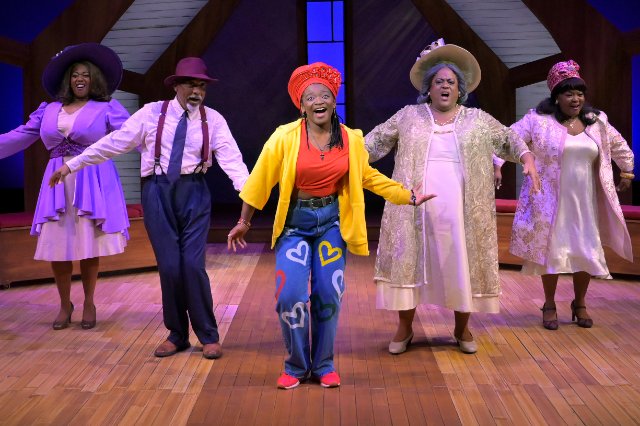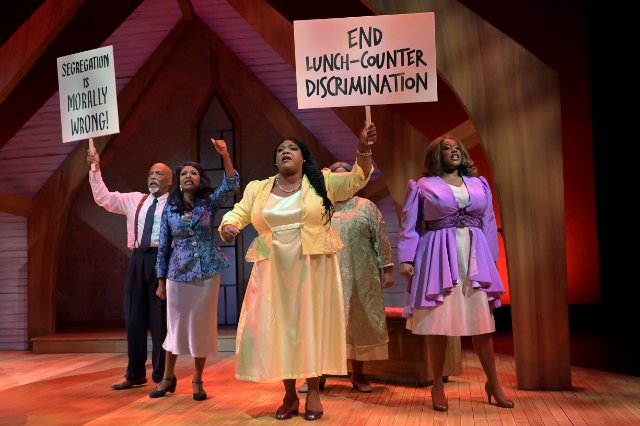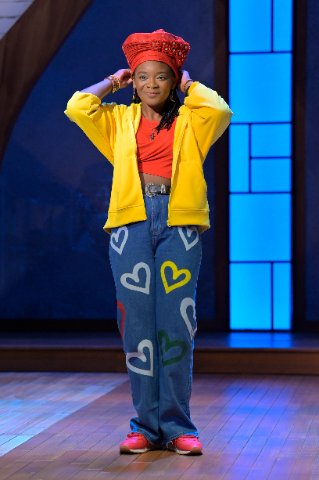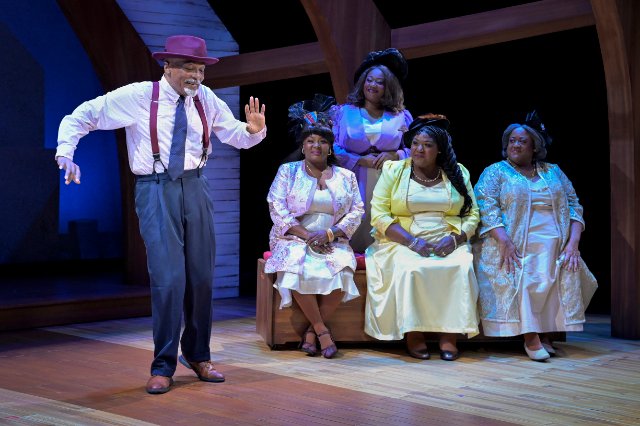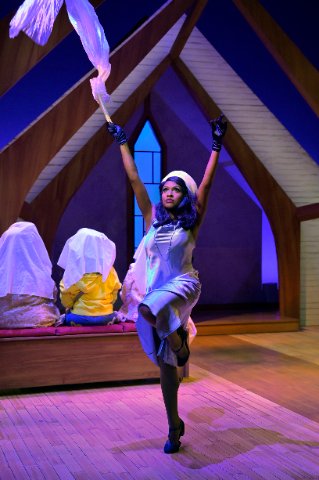Crowns
An Uplifting Celebration of African-American Women and Hats They Wear To Church
By: Victor Cordell - Sep 14, 2023
Hats. At times in European and American societies - de rigueur. Other times - almost absent. Often superfluous, sometimes functional. Most hats today explicitly celebrate one’s tribe or experience. The dominant form is the baseball cap, marked with the identity of, say, Aruba or St. Louis Cardinals or John Deere tractors.
Men’s styles have usually signaled conformity. Picture strolling, stuffy London bankers all in bowler hats with umbrellas as walking sticks. Recall black-and-white photos of the stands of baseball stadiums in the ‘50s with seas of men in near identical fedoras. For women, distinguishing and often expensive hats have more often represented class and fashion.
But in no realm has the hat been more joyously and extravagantly donned than among church-going African-American women. Playwright Regina Taylor has adapted the book “Crowns” to the stage, honoring these determined women. She’s added a gospel-dominated song score to highlight the talent of the cast and energize patrons into hand clapping response. The result is an energetic, audience-pleasing homage to African-American women and the hats that they wear. But it is not a mere feel-good style show. It also deals with social issues of the time and the tragedies that befall us all.
The show opens on a misdirect, with a teenage girl in Brooklyn performing a rap number. We soon learn the setup. Her brother has been murdered, and she is being sent to live with her grandmother in Darlington, South Carolina to avoid a similar fate. So one of the threads of the narrative is the cross-cultural conflict of a northern urban girl moving to a small southern town. Of course, she bridles at being surrounded by schoolmates with different, and what she considers backward ways, and by women of an older generation around her grandmother.
Mother Shaw, as the grandmother is known, is a paragon in the community. She maintains standards and expects her new charge to fall in line. One of those standards is wearing hats to church. Like many of her peers, she doesn’t have one or two, but a collection. One friend owns over 200, necessitating the use of storage at her sister’s house.
The practice of wearing hats derives from the notion of covering one’s head in the presence of the Lord in hopes of catching God’s eye. But, oh, how they cover their heads! Bright colors and radical shapes; brims as wide as shoulders; bonnets and dresses in the same material; feathers or fur, right down to having the head of a fox staring at whomever may be across from the wearer. A woman could be barefoot and in rags but still shine with dignity because of her crown.
“Crowns” brims with laughter and pulls on the heartstrings, but lacking a linear plotline, it has no emotional build to a climax. Its power comes largely from vignettes and from the ensemble of characters taking turns telling stories that revolve around their lives and the history of fighting oppression. The wearing of hats as church finery plays significant in its own right, as in slave days, special garb would have to be hidden from the white masters. The tradition continued, and especially when protesting for civil rights, headgear was off.
Many rules, both functional and social, apply to hat wearing. One is that another’s hat is to be appreciated and respected, not to be envied or resented. The special honor accorded hats is revealed in the funny story in which one of the women notes that she would lend her children out before her hats, observing that at least the children know their way home.
The cast of “Crowns” is full of strut and sass. Each performer is funny and has a fine and powerful voice. Each has “close ups,” and some numbers involve the whole cast, such as a vibrant version of “When the saints go marching in.” One annoyance in the script is that characters are not appropriately identified. Further, publicity materials don’t include songs and singers. In order to give personal credit for songs or skits, the reviewer would have to work backward from press photos and have either powerful skill for memory or crack note taking.
One character, Mother Shaw, is identified in the show, and she is one of its anchors. Juanita Harris portrays this gray eminence, and her voice is stunning, wailing in her upper range with clarity and penetration that really rings the bell. Since Darryl V. Jones is the only male, it’s easy to identify him as “The Man,” who performs and sings with great skill in his many incarnations. In addition, each of the other cast members (Janelle LaSalle, Constance Jewell Lopez, Antonia Reed, Erica Richardson, and Phaedra Tillery-Boughton) conveys the enjoyment of bringing this rousing play to the audience.
“Crowns” is written by Regina Taylor from the book of the same name by Michael Cunningham and Craig Marberry; produced by Center Repertory Company; and plays at Lesher Center for the Arts, 1601 Civic Drive, Walnut Creek, CA through October 6, 2023.

